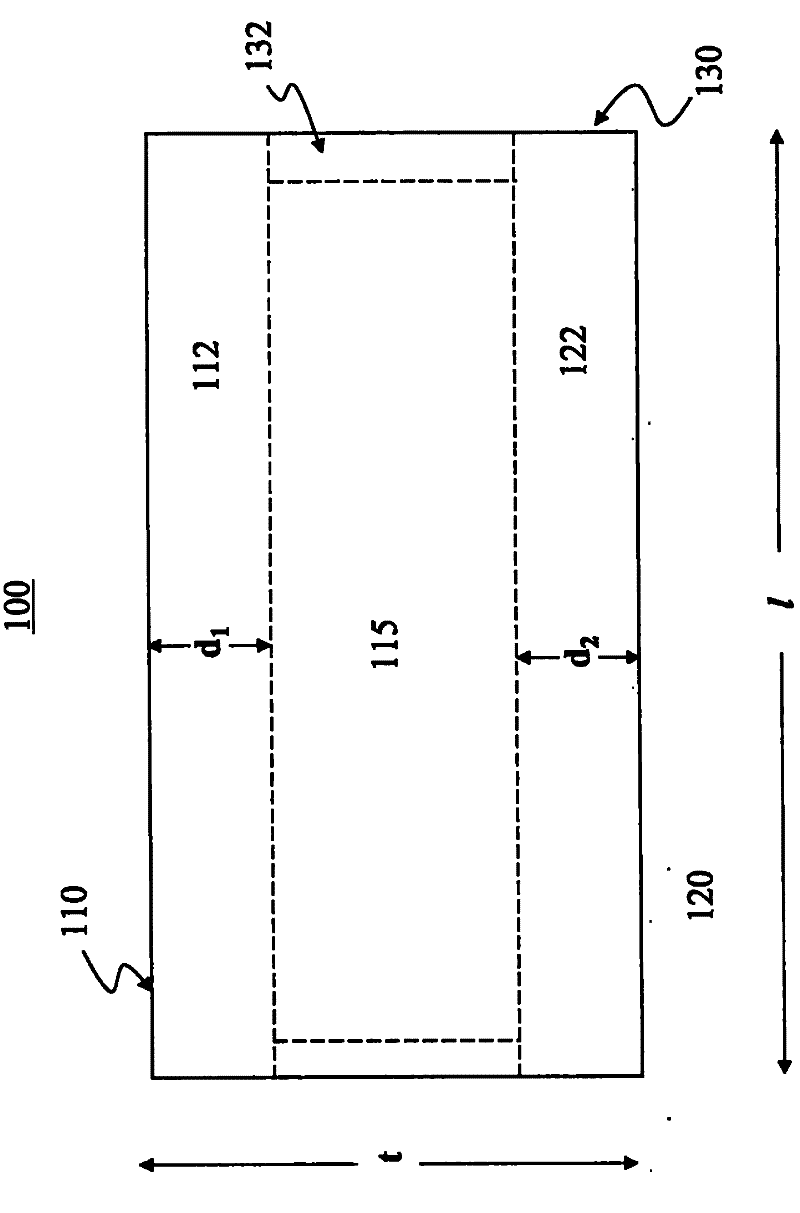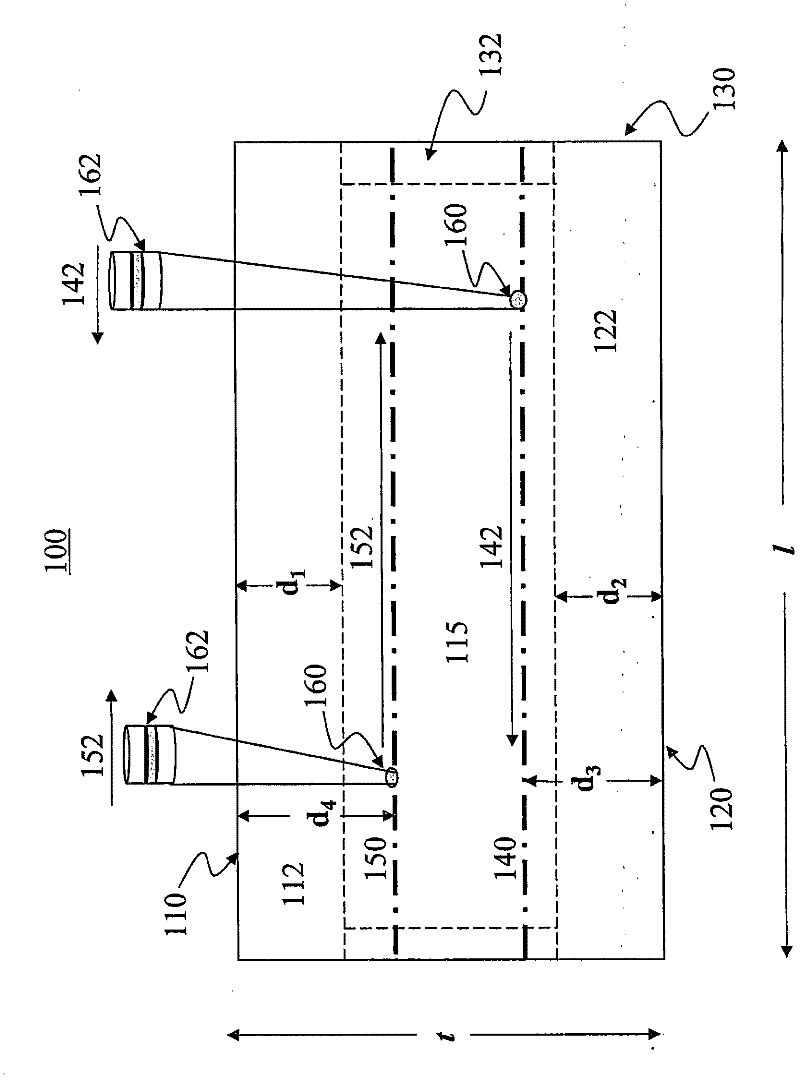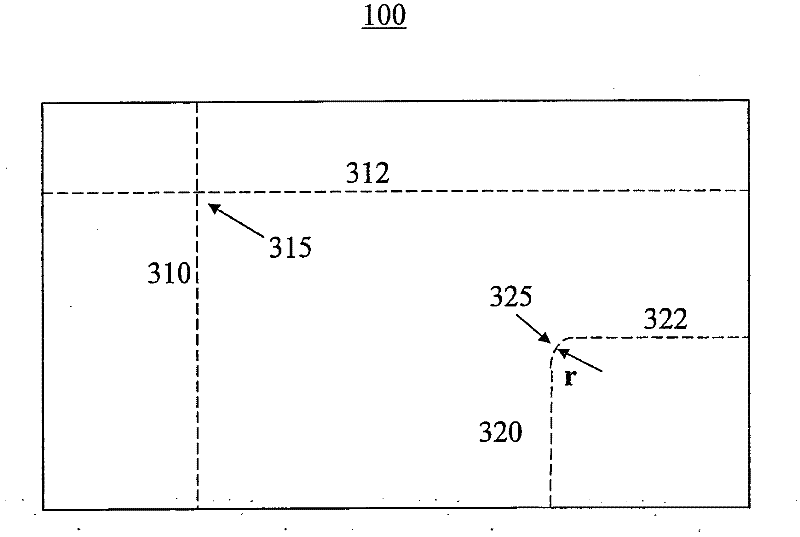Method of separating strengthened glass
A technology for strengthening glass and glass sheets, which is applied in glass manufacturing equipment, glass cutting devices, manufacturing tools, etc., and can solve problems such as multiple bifurcations and broken glass samples into multiple pieces.
- Summary
- Abstract
- Description
- Claims
- Application Information
AI Technical Summary
Problems solved by technology
Method used
Image
Examples
Embodiment 1
[0042] A glass sample with the following composition was melted at 410°C in KNO 3 Soak in bath for 7 hours to allow ion exchange: 66.7 mol% SiO 2 ; 10.5 mol% Al 2 o 3 ; 0.64 mol% B 2 o 3 ; 13.8 mol% Na 2 O; 2.06 mol% K 2 O; 5.50 mol% MgO; 0.46 mol% CaO; 0.01 mol% ZrO 2 ; 0.34 mol% As 2 o 3 ; and 0.007 mol % Fe 2 o 3 . The thickness of the resulting ion exchange layer on the glass surface was about 50 microns.
[0043] The glass sample was mounted on a computer-controlled XYZ frame moving at a speed of 30-300 mm / sec. First use a 0.27-NA lens to converge the output beam of the 355nm nanosecond Nd-YAG laser on the rear surface (i.e. the glass surface farthest from the laser, e.g. figure 1 and 2 50-100 microns above the second surface 120) in the center, converged into a light spot with a diameter of 1-3 microns. The average power of the laser beam is 1W, and the repetition rate is 150kHz. After writing the first break line near the rear surface, refocus the beam o...
PUM
| Property | Measurement | Unit |
|---|---|---|
| thickness | aaaaa | aaaaa |
| thickness | aaaaa | aaaaa |
Abstract
Description
Claims
Application Information
 Login to View More
Login to View More - R&D
- Intellectual Property
- Life Sciences
- Materials
- Tech Scout
- Unparalleled Data Quality
- Higher Quality Content
- 60% Fewer Hallucinations
Browse by: Latest US Patents, China's latest patents, Technical Efficacy Thesaurus, Application Domain, Technology Topic, Popular Technical Reports.
© 2025 PatSnap. All rights reserved.Legal|Privacy policy|Modern Slavery Act Transparency Statement|Sitemap|About US| Contact US: help@patsnap.com



